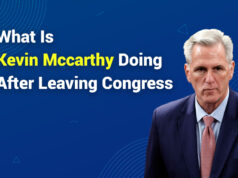As an avid observer of economic trends, I find the analysis of employment data to be a fascinating endeavor. The United States Bureau of Labor Statistics (BLS) is a treasure trove of information, providing comprehensive insights into the nation’s job market. In this article, we will delve into the latest US employment statistics, uncovering key insights and emerging trends that shape the landscape of work in America. The employment statistics released by the BLS serve as a barometer for the overall health of the economy. They offer a glimpse into the dynamics of various industries, the shifting workforce composition, and the ever-evolving nature of jobs.
By understanding these numbers, we can better comprehend the challenges and opportunities that lie ahead, enabling informed decision-making for individuals, businesses, and policymakers alike. As we embark on this exploration, it is crucial to recognize that employment data is not merely a collection of numbers; it represents the collective aspirations, struggles, and triumphs of millions of Americans striving to build fulfilling careers and secure financial stability for themselves and their families. With this perspective in mind, let us dive into the fascinating realm of US employment statistics.
Key Insights And Trends In The US Job Market
The Gig Economy: The rise of the gig economy, facilitated by technological advancements and changing workforce dynamics, has reshaped the traditional employment landscape. An increasing number of individuals are embracing flexible work arrangements, such as freelancing, contract work, and on-demand services. This trend has implications for job security, benefits, and the overall definition of “employment.”
Automation and Job Displacement: The rapid pace of technological innovation, particularly in fields like artificial intelligence and robotics, has raised concerns about job displacement. While automation has the potential to enhance productivity and create new job opportunities, it also poses challenges for workers whose skills may become obsolete. Reskilling and upskilling initiatives will be crucial in ensuring a smooth transition for the workforce.
Demographic Shifts: The US workforce is undergoing significant demographic changes, with the aging population and the influx of younger generations reshaping the labor market. Employers must adapt to the unique needs and preferences of these diverse age groups, fostering inclusive and accommodating work environments.
Remote Work and Flexible Arrangements: The COVID-19 pandemic has accelerated the adoption of remote work and flexible arrangements, challenging traditional notions of the workplace. As companies and employees embrace this new normal, it raises questions about productivity, work-life balance, and the future of office spaces.
Skills Gap: Employers across various industries have reported difficulties in finding qualified candidates with the necessary skills and expertise. This skills gap highlights the need for collaboration between educational institutions, employers, and policymakers to ensure that training programs align with the evolving demands of the job market.
Diversity and Inclusion: Efforts to promote diversity and inclusion in the workplace have gained momentum as companies recognize the benefits of a diverse workforce in driving innovation, attracting top talent, and better serving diverse customer bases.
Sustainability and Green Jobs: As concerns over climate change and environmental sustainability grow, there has been an increasing focus on creating and supporting “green jobs” in sectors such as renewable energy, sustainable agriculture, and eco-friendly manufacturing.
Wage Growth And Income Inequality In The US
One of the most pressing issues in the realm of employment is the relationship between wage growth and income inequality. Despite the overall job market recovery, concerns persist regarding the distribution of economic gains and the widening gap between the highest and lowest earners.
According to the BLS data, wage growth has been uneven across different income levels and industries. While some sectors have experienced robust wage increases, others have lagged behind, contributing to income disparities. This uneven wage growth can exacerbate existing inequalities and pose challenges for achieving a more equitable and inclusive economy.
To address this issue, policymakers and stakeholders have proposed various strategies, such as raising the minimum wage, promoting collective bargaining, and investing in workforce development programs. Additionally, there is a growing emphasis on promoting pay transparency and addressing discriminatory practices that may contribute to wage gaps based on gender, race, or other factors.
It is crucial to recognize that wage growth and income inequality are complex issues with multiple contributing factors, including globalization, technological advancements, and shifting labor market dynamics. Addressing these challenges requires a multifaceted approach that considers the diverse needs and perspectives of workers, employers, and communities.
Demographic Factors Influencing Employment Statistics
Employment statistics are not solely driven by economic factors; demographic shifts also play a significant role in shaping the workforce landscape. Let’s explore some key demographic factors influencing these statistics:
Age Distribution
The aging population and the influx of younger generations into the workforce have created unique challenges and opportunities. As the Baby Boomer generation retires, there is a need to address potential labor shortages in certain sectors, while also accommodating the preferences and skills of younger workers.
Gender Dynamics
The participation of women in the workforce has increased significantly over the past decades. However, gender disparities persist in terms of employment rates, wage gaps, and representation in specific industries and leadership roles.
Educational Attainment
Higher levels of education often correlate with better employment prospects and higher earning potential. However, access to quality education and training programs remains a challenge for certain demographic groups, potentially exacerbating existing inequalities.
Immigration
The influx of immigrants, both skilled and unskilled, has had a profound impact on the labor market. While some argue that immigration contributes to job competition, others highlight the potential economic benefits and the filling of labor shortages in specific sectors.
The Impact Of Technology And Automation On Employment
The rapid advancement of technology and automation has disrupted traditional employment patterns, creating both challenges and opportunities. Let’s explore the impact of these forces on the job market:
- Job Displacement: Certain industries and occupations have experienced job losses due to automation and technological advancements. For instance, the manufacturing sector has seen a decline in employment as robotics and automated processes have replaced human labor.
- New Job Creation: While automation may displace certain jobs, it also creates new opportunities in emerging fields. The technology sector, for example, has witnessed a surge in demand for professionals skilled in areas such as artificial intelligence, data analytics, and cybersecurity.
- Skill Transformation: As technology continues to evolve, the skills required for many jobs are also changing. Employees must adapt and continuously upskill to remain competitive in the job market, highlighting the importance of lifelong learning and reskilling initiatives.
- Gig Economy: The rise of the gig economy, facilitated by digital platforms and flexible work arrangements, has reshaped the traditional employment model. While offering greater flexibility, this trend also raises concerns about job security, benefits, and worker protections.
Navigating the impact of technology and automation requires a proactive approach, involving collaboration between policymakers, educators, and industry leaders to ensure a smooth transition and equip the workforce with the necessary skills for the jobs of the future.
Government Policies And Their Effect On The Job Market
Government policies play a pivotal role in shaping the employment landscape, influencing factors such as job creation, workforce development, and economic growth. Let’s explore some key policy areas and their potential impact:
Fiscal and Monetary Policies: Measures such as tax incentives, interest rate adjustments, and government spending can stimulate or dampen economic activity, directly impacting employment levels across various sectors.
Labor Laws and Regulations: Policies related to minimum wage, worker protections, unionization, and workplace safety can significantly influence the job market, affecting both employers and employees.
Trade and Immigration Policies: Policies governing international trade and immigration can impact the availability of labor, the competitiveness of domestic industries, and the flow of skilled workers across borders.
Education and Training Initiatives: Government-funded programs aimed at improving access to education, vocational training, and reskilling opportunities can help bridge the skills gap and prepare the workforce for emerging job opportunities.
Infrastructure Investment: Investments in infrastructure projects, such as transportation, energy, and telecommunications, can create jobs in construction and related industries while also facilitating economic growth and productivity.
Future Outlook For US Employment Statistics
As we look ahead, several factors will shape the future trajectory of US employment statistics. Here are some key considerations:
- Economic Forecasts: Projections of economic growth, consumer spending, and industry trends will play a significant role in determining future employment levels and job creation opportunities.
- Technological Advancements: The continued acceleration of technological innovations, such as artificial intelligence, robotics, and automation, will likely disrupt traditional employment patterns, necessitating a proactive approach to reskilling and workforce adaptation.
- Demographic Shifts: Changes in population dynamics, including aging populations, immigration patterns, and evolving workforce preferences, will influence the supply and demand for labor in various sectors.
- Global Trade and Geopolitical Factors: International trade agreements, tariffs, and geopolitical tensions can impact domestic industries, potentially affecting employment levels and job opportunities.
- Climate Change and Sustainability Initiatives: The transition towards a more sustainable and eco-friendly economy may create new job opportunities in sectors such as renewable energy, green technology, and environmental conservation while potentially impacting traditional industries.
Anticipating and preparing for these future trends will be crucial for policymakers, employers, and individuals alike, ensuring a smooth adaptation to the evolving job market and promoting economic resilience.
Conclusion
The exploration of US employment statistics has revealed a complex and dynamic landscape shaped by a multitude of factors. From industry-specific trends and regional disparities to demographic shifts and technological advancements, each element contributes to the intricate tapestry of the job market. As we navigate these ever-changing waters, it is essential to remain vigilant and adaptive. Policymakers must craft informed strategies that promote economic growth, address income inequality, and facilitate workforce development. Employers must prioritize upskilling and reskilling initiatives to ensure their workforce remains competitive and aligned with emerging job requirements. Individuals must embrace a mindset of lifelong learning, continuously enhancing their skills and adapting to the evolving demands of the job market.
By fostering collaboration among all stakeholders and leveraging the insights gleaned from employment statistics, we can pave the way for a more resilient, equitable, and prosperous job market, one that empowers individuals, strengthens communities and propels the nation toward sustained economic growth.














